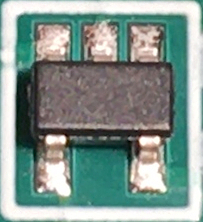|
STONITH
STONITH ("Shoot The Other Node In The Head" or "Shoot The Offending Node In The Head"), sometimes called STOMITH ("Shoot The Other Member/Machine In The Head"), is a technique for fencing in computer clusters. Fencing is the isolation of a failed node so that it does not cause disruption to a computer cluster. As its name suggests, STONITH fences failed nodes by resetting or powering down the failed node. Multi-node error-prone contention in a cluster can have catastrophic results, such as if both nodes try writing to a shared storage resource. STONITH provides effective, if rather drastic, protection against these problems. Single node systems use a comparable mechanism called a watchdog timer A watchdog timer (sometimes called a ''computer operating properly'' or ''COP'' timer, or simply a ''watchdog'') is an electronic or software timer that is used to detect and recover from computer malfunctions. Watchdog timers are widely used in .... A watchdog timer will reset the nod ... [...More Info...] [...Related Items...] OR: [Wikipedia] [Google] [Baidu] |
Fencing (computing)
Fencing is the process of isolating a node of a computer cluster or protecting shared resources when a node appears to be malfunctioning.''Sun Cluster environment: Sun Cluster 2.2'' by Enrique Vargas, Joseph Bianco, David Deeths 2001 ISBN page 58 As the number of nodes in a cluster increases, so does the likelihood that one of them may fail at some point. The failed node may have control over shared resources that need to be reclaimed and if the node is acting erratically, the rest of the system needs to be protected. Fencing may thus either disable the node, or disallow shared storage access, thus ensuring data integrity. Basic concepts A node fence (or I/O fence) is a virtual "fence" that separates nodes which must not have access to a shared resource from that resource. It may separate an active node from its backup. If the backup crosses the fence and, for example, tries to control the same disk array as the primary, a data hazard may occur. Mechanisms such as STONITH are de ... [...More Info...] [...Related Items...] OR: [Wikipedia] [Google] [Baidu] |
Computer Cluster
A computer cluster is a set of computers that work together so that they can be viewed as a single system. Unlike grid computers, computer clusters have each node set to perform the same task, controlled and scheduled by software. The components of a cluster are usually connected to each other through fast local area networks, with each node (computer used as a server) running its own instance of an operating system. In most circumstances, all of the nodes use the same hardware and the same operating system, although in some setups (e.g. using Open Source Cluster Application Resources (OSCAR)), different operating systems can be used on each computer, or different hardware. Clusters are usually deployed to improve performance and availability over that of a single computer, while typically being much more cost-effective than single computers of comparable speed or availability. Computer clusters emerged as a result of convergence of a number of computing trends including ... [...More Info...] [...Related Items...] OR: [Wikipedia] [Google] [Baidu] |
Node (networking)
In telecommunications networks, a node (, ‘knot’) is either a redistribution point or a communication endpoint. The definition of a node depends on the network and protocol layer referred to. A physical network node is an electronic device that is attached to a network, and is capable of creating, receiving, or transmitting information over a communication channel. A passive distribution point such as a distribution frame or patch panel is consequently not a node. Computer networks In data communication, a physical network node may either be data communication equipment (DCE) such as a modem, hub, bridge or switch; or data terminal equipment (DTE) such as a digital telephone handset, a printer or a host computer. If the network in question is a local area network (LAN) or wide area network (WAN), every LAN or WAN node that participates on the data link layer must have a network address, typically one for each network interface controller it possesses. Examples a ... [...More Info...] [...Related Items...] OR: [Wikipedia] [Google] [Baidu] |
Watchdog Timer
A watchdog timer (sometimes called a ''computer operating properly'' or ''COP'' timer, or simply a ''watchdog'') is an electronic or software timer that is used to detect and recover from computer malfunctions. Watchdog timers are widely used in computers to facilitate automatic correction of temporary hardware faults, and to prevent errant or malevolent software from disrupting system operation. During normal operation, the computer regularly restarts the watchdog timer to prevent it from elapsing, or "timing out". If, due to a hardware fault or program error, the computer fails to restart the watchdog, the timer will elapse and generate a timeout signal. The timeout signal is used to initiate corrective actions. The corrective actions typically include placing the computer and associated hardware in a safe state and invoking a computer reboot. Microcontrollers often include an integrated, on-chip watchdog. In other computers the watchdog may reside in a nearby chip that connec ... [...More Info...] [...Related Items...] OR: [Wikipedia] [Google] [Baidu] |


